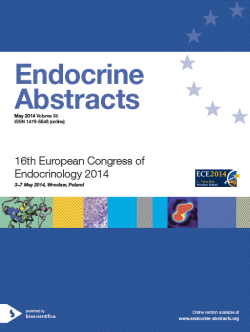Symposia
Clinical outcome of medical intervention in Disorder of Sex Development (DSD)
ea0035s14.1 | Clinical outcome of medical intervention in Disorder of Sex Development (DSD) | ECE2014
dsd-LIFE: clinical European outcome study of disorders of sex development
Kohler Birgit , Arlt Wiebke , Bouvattier Claire , Chatelain Pierre , Grinten Hedi Claahsen van der , Cohen-Kettenis Peggy , Nordenstrom Anna , Pienkowski Catherine , Richter-Unruh Annette , Slowikowska-Hilczer Jolanta , Szarras-Capnik Maria , Reisch Nicole , Sultan Charles , Thyen Ute , Wiesemann Claudia
ea0035s14.2 | Clinical outcome of medical intervention in Disorder of Sex Development (DSD) | ECE2014
Consequences of the preservation of underdeveloped testes in adulthood
ea0035s14.3 | Clinical outcome of medical intervention in Disorder of Sex Development (DSD) | ECE2014




